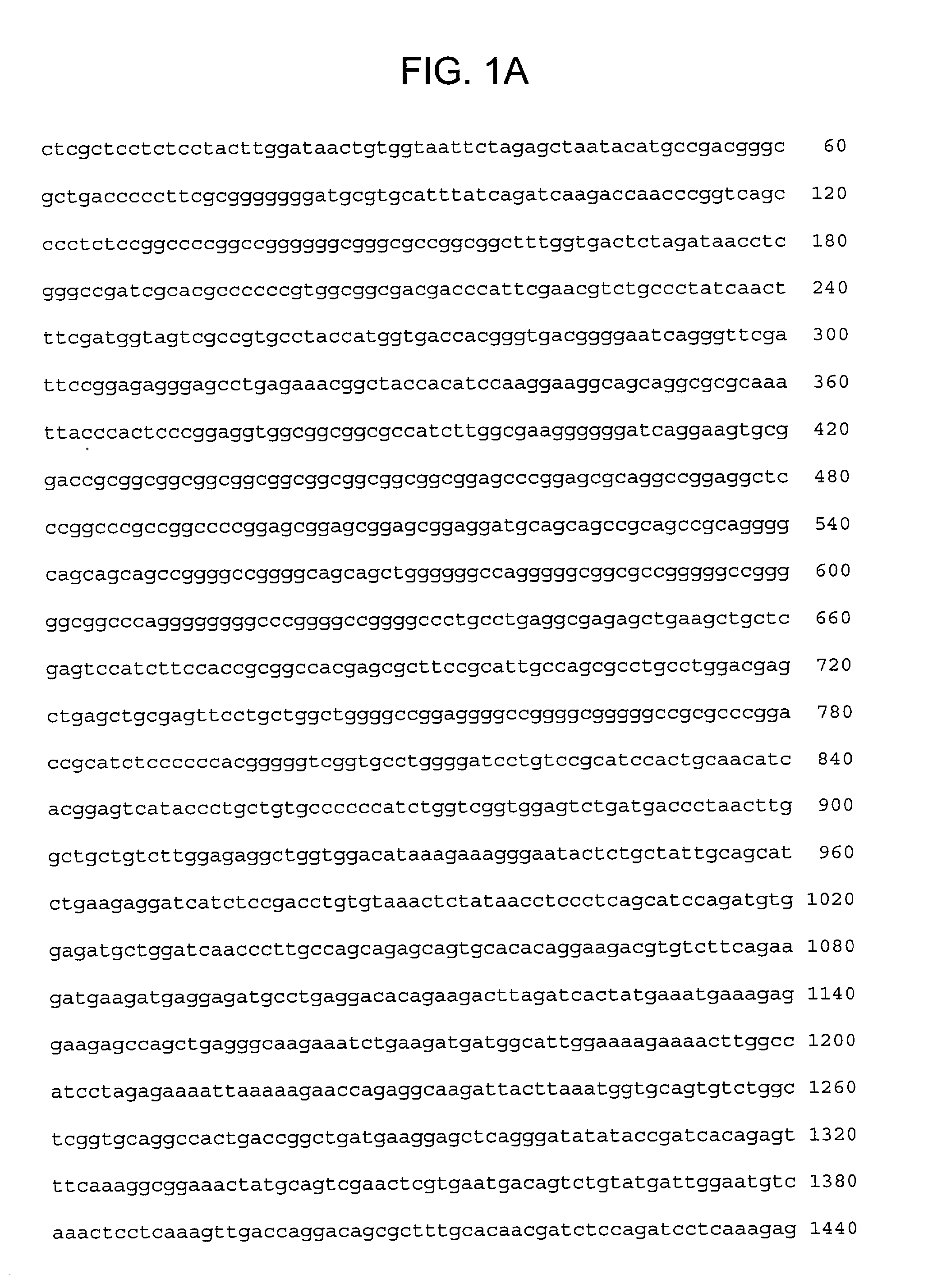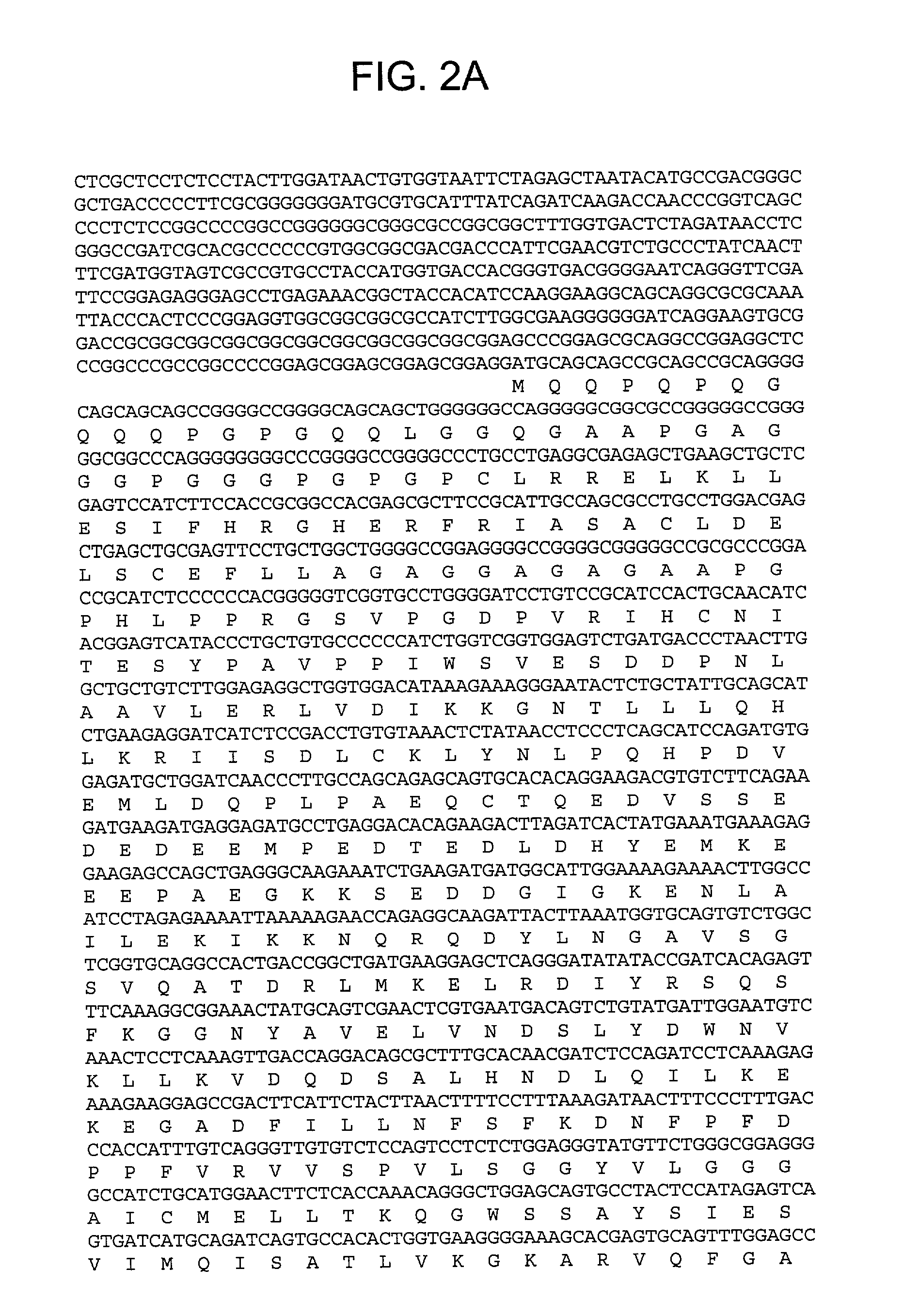Polynucleotide encoding an activated human T-lymphocyte-derived protein related to ubiquitin conjugating enzyme
a technology of ubiquitin conjugating enzyme and polynucleotide, which is applied in the direction of peptide/protein ingredients, fusion polypeptides, fungi, etc., can solve the problem that low stringency does not permit non-specific binding
- Summary
- Abstract
- Description
- Claims
- Application Information
AI Technical Summary
Problems solved by technology
Method used
Image
Examples
example 1
Methods
[0269] A. T-Cell Preparation
[0270] T cells were prepared by standard rosetting protocols with sheep red blood cells (SRBCs). Briefly, peripheral blood mononuclear cells (PBMCs) from 225 ml of heparinized blood from each of 2 donors were prepared by centrifugation over Ficoll. T cells (E+fraction) were isolated by rosetting with SRBCs. Messenger RNA (mRNA) from one half of the unstimulated T cells (approximately 2.25.times.10.sup.8 cells) was prepared according to the manufacturer's instructions with a FAST-TRACK mRNA isolation kit (Invitrogen). The remaining T cells were diluted to 1.25.times.10.sup.6 / ml in RPMI / 10%FBS containing the costimulatory anti-CD28 mAb 2E12 at 5 .mu.g / ml and added (20 ml / plate) to 10 cm tissue culture plates (Corning) that had been coated with anti-CD3 mAb G19-4. Plates were coated by incubating 5 ml of 5 ug / ml mAb diluted in PBS for 7hours at 37.degree. C. followed by washing 3 times with PBS. The plates were cultured under normal conditions of cell...
example 2
Cloning of RATL1d6 Polynucleotide
[0278] Full-length cloning experiments to isolate and obtain the RATL1d6 polynucleotide were performed using Gene Trapper technology (LifeTechnologies, Md.) according to the manufacturer's instructions. Briefly, PCR primers PY508, (5'-TGCAGTGTCTGGCTCGGTGC-3'), (SEQ ID NO:9) and PY509, (5'-CTGATCTGCATGATCACTGAC-3'), (SEQ ID NO:10) were used to screen a panel of human cDNA libraries (LifeTechnologies), including bone marrow, heart, lung, brain, kidney, peripheral blood leukocyte, liver, spleen, testis and fetal brain cDNA libraries. A strong positive PCR product was identified in human brain and bone marrow cDNA libraries (LifeTechnologies).
[0279] The double stranded cDNA plasmid libraries were converted to single stranded DNA (ssDNA) using Gene II and Exonuclease II. Hybrids between the biotinylated oligonucleotide (PY495: 5'-TCCACTGCMCATCACGGAGTCATACCCTG--3'), (SEQ ID NO: 11) or (PY496: 5'-ATGCAGTCGAACTCGTGAATGACAGTCTGT-3'), (SEQ ID NO:12) and the ss...
example 3
Labeling of Hybridization Probes and Use Thereof
[0281] Hybridization probes derived from SEQ ID NO:1 are employed to screen cDNAs, genomic DNAs, or mRNAs. Although the labeling of oligonucleotides containing about 20 base pairs is described in this Example, essentially the same procedure is used with larger cDNA fragments. Oligonucleotides are designed using state-of-the-art software such as OLIGO 4.06 (National Biosciences), labeled by combining 50 pmol of each oligomer and 250 .mu.Ci of [.gamma.-.sup.32P] adenosine triphosphate (Amersham) and T4 polynucleotide kinase (DuPont NEN, Boston, Mass.). The labeled oligonucleotides are substantially purified with SEPHADEX G-25 superfine resin column (Amersham Pharmacia Biotech). A portion containing 10.sup.7 counts per minute of each of the sense and antisense oligonucleotides is used in a typical membrane based hybridization analysis of human genomic DNA digested with one of the following endonucleases (e.g., Ase I, Bgl II, Eco RI, Pst I...
PUM
| Property | Measurement | Unit |
|---|---|---|
| Fraction | aaaaa | aaaaa |
| Fraction | aaaaa | aaaaa |
| Angle | aaaaa | aaaaa |
Abstract
Description
Claims
Application Information
 Login to View More
Login to View More - R&D
- Intellectual Property
- Life Sciences
- Materials
- Tech Scout
- Unparalleled Data Quality
- Higher Quality Content
- 60% Fewer Hallucinations
Browse by: Latest US Patents, China's latest patents, Technical Efficacy Thesaurus, Application Domain, Technology Topic, Popular Technical Reports.
© 2025 PatSnap. All rights reserved.Legal|Privacy policy|Modern Slavery Act Transparency Statement|Sitemap|About US| Contact US: help@patsnap.com



